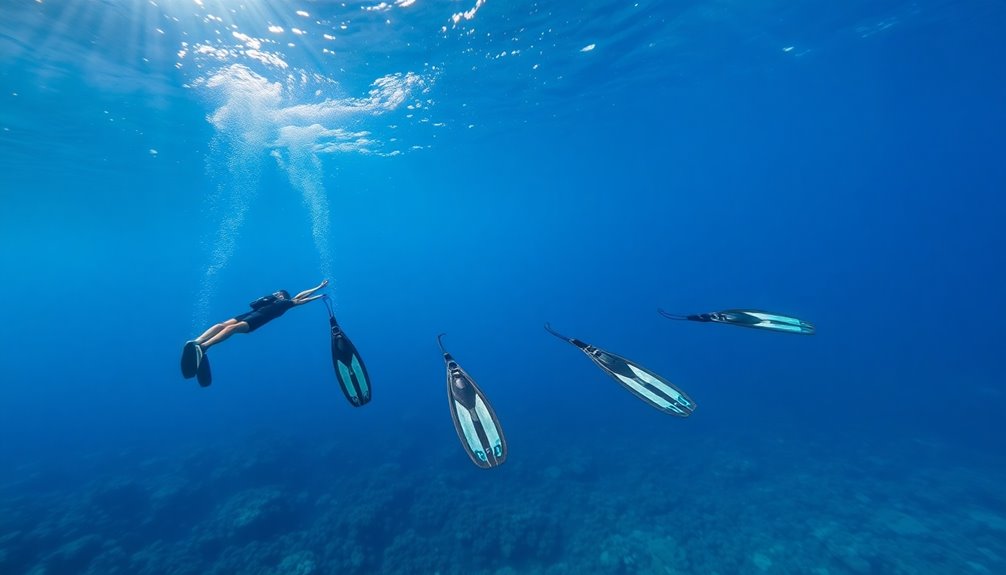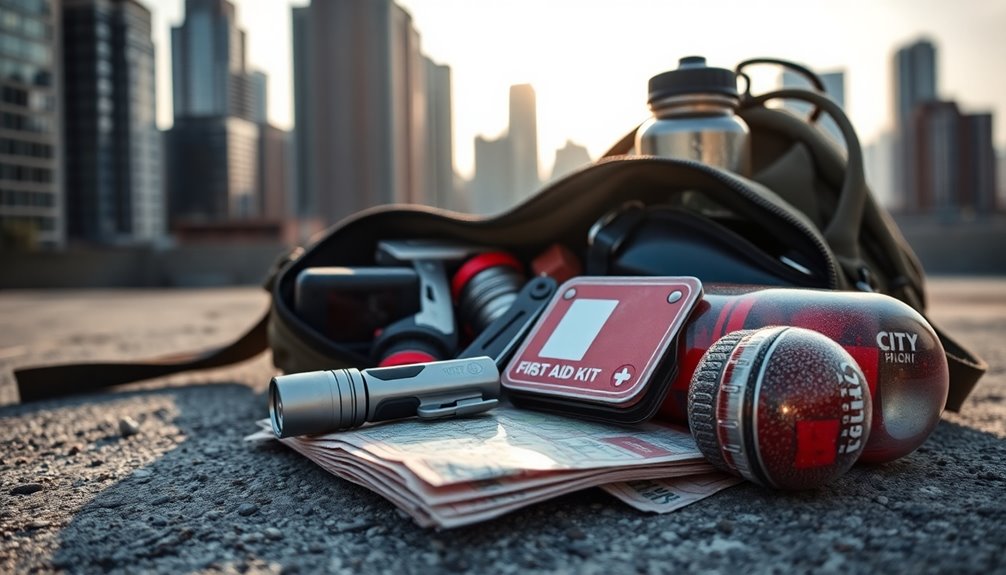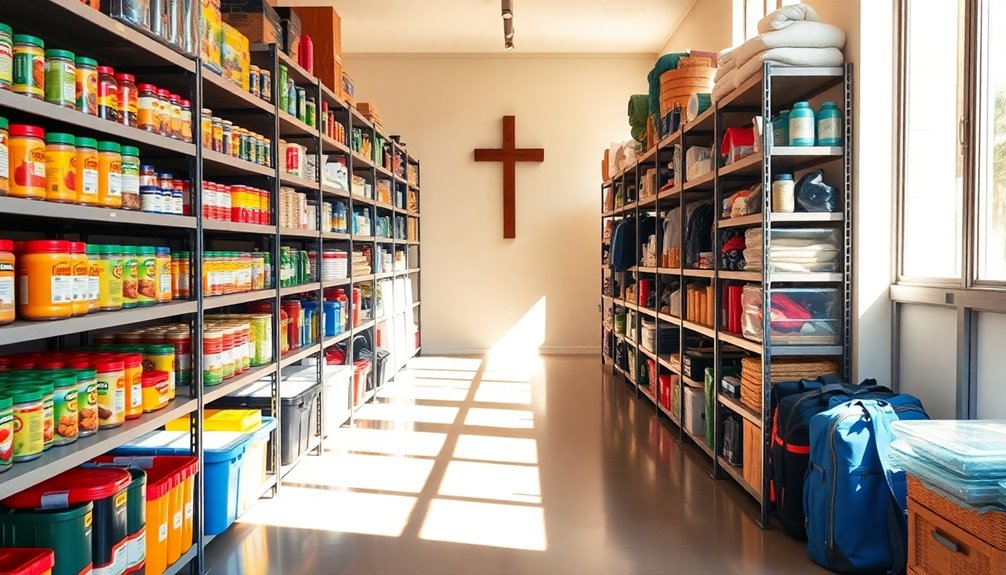To keep your family safe, it’s super important to gather prepper supplies before something unexpected happens! Start by stocking up on non-perishable foods like canned veggies, dried beans, and tasty snacks like granola bars. Don’t forget about water—aim for about one gallon per person each day. A basic first aid kit is also a must, with band-aids and pain relievers. Grab a flashlight, some warm clothing, and a multi-tool for any emergencies. With everything organized, you can feel confident! Excited to learn more about what supplies to gather next? Stick around, and let’s get ready! Consider investing in a 3 month food supply to ensure that your family has enough to eat during an extended emergency. It’s also a good idea to include a manual can opener, camping stove, and fuel for cooking in case of power outages. Finally, don’t forget to include important documents like copies of IDs, insurance policies, and emergency contacts in a waterproof container as part of your prepper supplies. With these items in hand, you can rest easy knowing that you’re prepared for whatever comes your way!
Key Takeaways
- Stock non-perishable foods, including canned goods and dried items, to ensure a reliable food supply during emergencies.
- Prepare at least 1 gallon of water per person per day for a minimum of three days and include purification options.
- Assemble a comprehensive first aid kit with essential medical supplies, pain relievers, and emergency tools for injuries.
- Invest in lightweight shelter options like tents and sleeping bags to provide protection and warmth during emergencies.
- Develop survival skills, establish a communication plan, and maintain physical readiness to effectively respond to crises.
Essential Food and Water
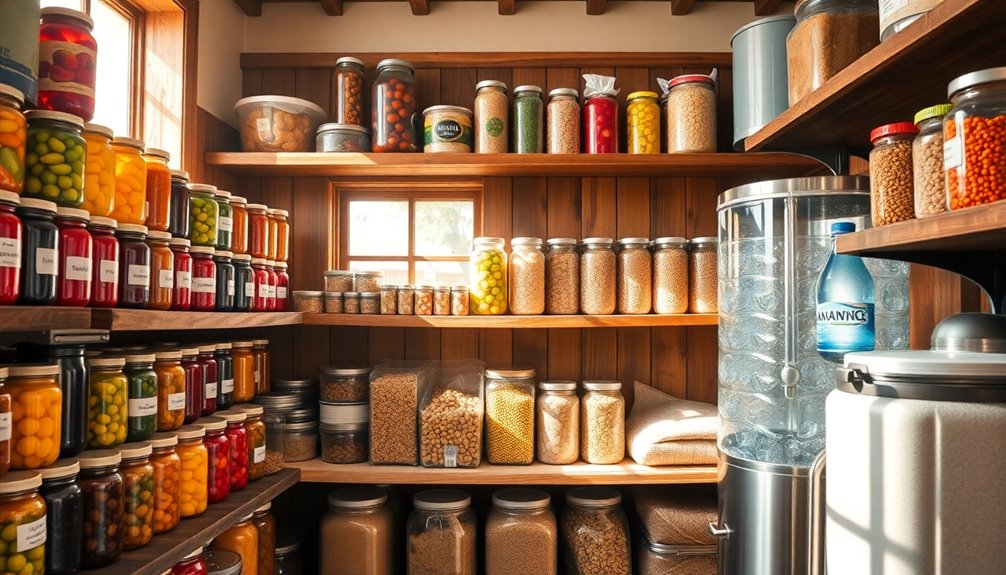
When preparing for emergencies, having essential food and water supplies is crucial for your survival.
You'll want to stock up on non-perishable foods that'll last a long time, like canned goods—think vegetables, fruits, soups, and meats! Dried foods, such as beans, rice, and pasta, are great options too. Maintaining optimal air quality can also enhance your overall health during emergencies.
Don't forget trail mixes, protein bars, and granola bars for quick energy boosts. Shelf-stable foods are ideal for long-term storage since they can be kept at room temperature and have a long lifespan.
For long-term food storage, consider items like wheat berries, corn, and dry beans packed in airtight containers. Instant mashed potatoes and freeze-dried fruits can really save the day!
Water is just as important. Aim for at least one gallon per person per day for at least three days.
Portable water filters, like Lifestraw, are super handy, and water purification tablets can keep your supply safe.
Lastly, remember to get some ready-to-eat meals for those busy days. High-energy snacks like peanut butter and crackers will keep you going, while cookies can lift your spirits when times get tough.
First Aid and Medical Supplies

Food and water are just the beginning of your emergency preparedness; having a well-stocked first aid and medical supplies kit is vital too. You never know when a scraped knee or a bee sting might happen, so it's great to be ready!
Start with basic supplies like bandages in different sizes, adhesive tape, and gauze pads. Don't forget medical gloves, tweezers, and antiseptic wipes to keep things clean and safe. A comprehensive kit like the SURVIVAL Family First Aid KIT PLUS ensures you're equipped to handle various injuries effectively.
Next, stock up on pain relievers like aspirin and ibuprofen, along with allergy medications and burn relief gels. These can make a big difference when someone isn't feeling well.
For more serious situations, include items like a CPR shield, instant cold packs, and emergency blankets.
Having splints and pressure bandages is also smart, especially for those unexpected accidents. Remember, it's better to be prepared than to panic!
You want your first aid kit to be like a superhero in a box, ready to save the day. So, gather your supplies, and pack them neatly. You'll feel great knowing you're ready to handle whatever comes your way!
Shelter and Clothing Needs

Having the right shelter and clothing is crucial for your emergency preparedness plan. When you think about shelter, tents are lightweight and easy to set up, making them a fantastic option for various situations. You might also want tarps, which can protect you from rain or harsh sun, but they can be a bit tricky to use.
Don't forget sleeping bags! They're essential for keeping warm during cold nights and preventing hypothermia. Additionally, having a reliable shelter can significantly enhance your self-sufficiency and comfort during emergencies.
Now, let's talk clothing. Start with long-sleeve base layers that wick away sweat; they're great for staying dry and comfy. And remember the importance of good socks! They help keep your feet healthy inside your boots.
Layering is key, so add insulating mid-layers and durable outer layers like jackets to shield you from the elements. Waterproof fabrics, like Gore-Tex, are a must for those rainy days.
Finally, make sure to pack rugged pants and sturdy gloves for protection. Hats are super helpful, too, for keeping the sun off your face or keeping your head warm.
With the right gear, you'll be ready for anything, and that's a pretty awesome feeling!
Power and Lighting Solutions
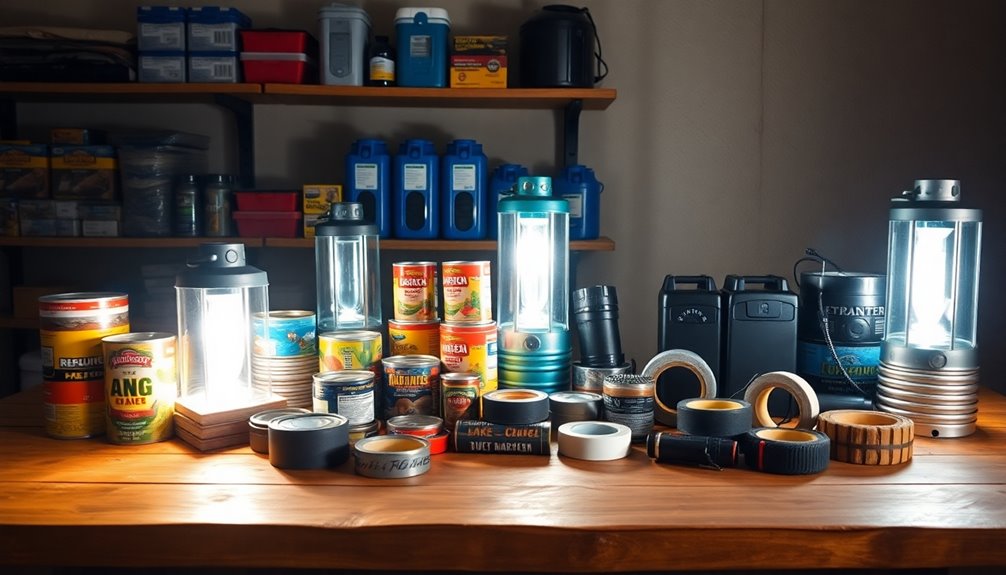
Power and lighting solutions are vital components of your emergency preparedness plan, ensuring you can see and navigate safely in the dark. Having a good flashlight or headlamp is a must! These handy tools give you directional light, and LED versions are extra special because they're energy-efficient and stay cool, helping to avoid fire hazards.
Look for models with hooks or magnets, so you can place them wherever you need. Rechargeable batteries extend their life, too, which is pretty cool! Additionally, a mix of rechargeable and alkaline batteries is suggested to ensure you have reliable backup power during emergencies.
For larger areas, consider LED lanterns to light up your living room or backyard. If you're feeling adventurous, propane lanterns can shine bright, providing light and warmth, but remember to handle them with care to avoid fire risks.
Solar-powered lights are a fantastic choice for long-term emergencies. They recharge in sunlight and can keep shining for hours!
Don't forget about chemical light sticks—they're great for creating minimal light and can even be used as signals. With all these options, you can light up your space and stay safe when the lights go out!
Tools and Equipment Essentials

When disaster strikes, having the right tools and equipment can make all the difference in your survival.
You'll want to start with shelter and protection tools like lightweight tents and tarps to keep you safe from rain or strong winds. Don't forget a sleeping bag to stay warm at night, and maybe even a gas mask for those unexpected moments when the air isn't so fresh. A bucket toilet can help with sanitation when regular toilets are out of commission.
First aid kits are must-haves, packed with bandages, antiseptic wipes, and pain relievers. Keep some prescription medications handy, too, just in case. Additionally, regular reassessment of supplies ensures that you have all the necessary items ready for emergencies.
Multi-tools are your best buddy, combining a knife, screwdriver, and more into one handy device. And when it's time to eat, water purifiers will turn nearby water into something safe to drink, while cooking kits help you whip up meals.
Lastly, don't forget those waterproof matches! They're perfect for starting a fire, which is essential for cooking or warmth.
With these tools and equipment, you’ll be well-prepared for whatever comes your way. Happy prepping! Don’t forget to double-check your prepper checklist essentials to make sure you have everything you need. Being prepared is key when it comes to handling unexpected situations, so having the right tools and equipment on hand can make all the difference. Stay organized, stay informed, and stay ready for anything that may come your way.
Communication and Security Measures
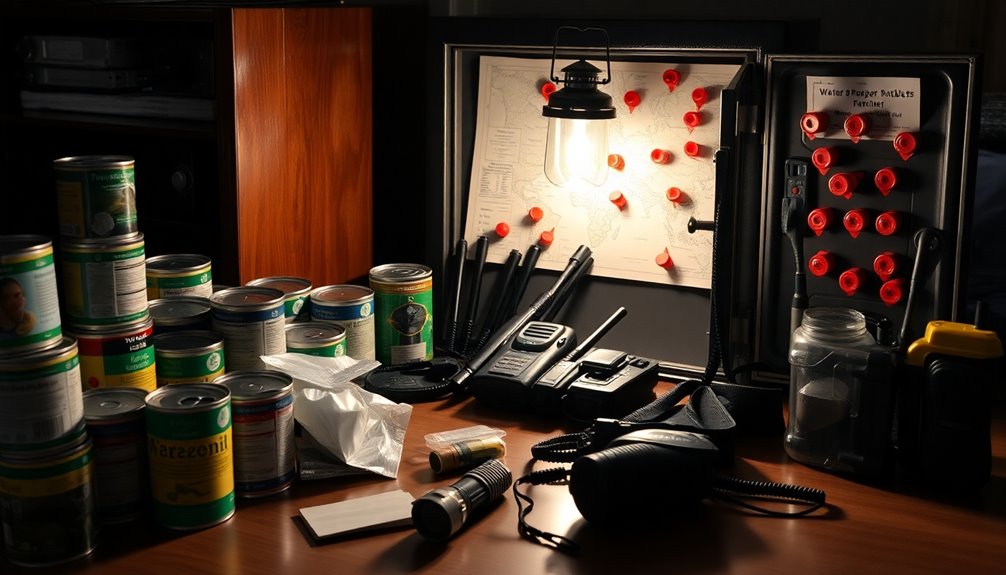
Effective communication and security measures are crucial in a survival situation. You never know when a storm or other emergency might strike, so it's smart to have a plan!
First, use various communication methods. While cellular networks are handy, they can fail, so consider landlines or two-way radios like walkie-talkies for short-range chats. For long distances, satellite phones have your back!
Next, create a detailed communication plan. Think about meeting points if you get separated, and set up regular check-ins. It's like a treasure map, guiding you to safety! Practicing your plan with family and friends helps everyone feel ready and confident. Additionally, being aware of current events aids in proactive problem-solving during crises.
Now, don't forget security! Use call signs when talking on radios to keep things clear and fun. Remember to avoid sharing sensitive information over walkie-talkies; we don't want to invite any unwanted listeners to our party!
With a solid communication plan and security protocols, you'll feel more prepared for anything. So gear up, stay connected, and keep your spirits high! After all, being a prepper can be an exciting adventure!
Long-Term Food Storage
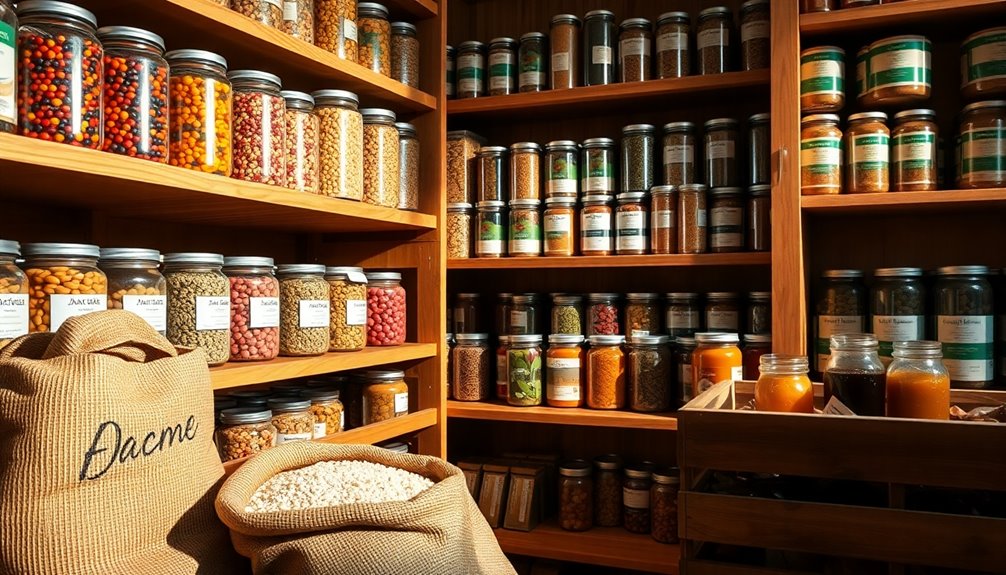
Long-term food storage is vital for any prepper looking to ensure their family's survival during emergencies. You want to stock up on foods that are both tasty and nutritious, like freeze-dried meals or bulk staples such as wheat, corn, and beans. These can last a whopping 25 years if stored properly! Additionally, consider investing in a 4-Week Survival Food Supply to kickstart your long-term storage efforts. Having a well-stocked pantry will provide you with essential gear needed for various emergencies.
Don't forget to think about special dietary needs, too—everyone deserves to eat well, even in tough times.
When you store your food, keep it in a cool, dark place. Use containers that protect your goodies, like nitrogen-packed cans or airtight pouches. It's also smart to keep food off the floor to avoid moisture and pests. You might even treat grains with dry ice to keep those pesky bugs away!
Make a plan for how much food you need each year. You'll want around 240 pounds of wheat and corn, plus 75 pounds of powdered milk for every adult.
Remember to rotate your supplies regularly, so everything stays fresh. With a little creativity, you can find clever storage spots around your home, like under your bed.
Happy prepping!
Emergency Evacuation Kits

After securing your long-term food storage, it's time to think about how you'll respond in an emergency. Having an Emergency Evacuation Kit ready can make all the difference when you need to leave quickly.
Start with water—pack one gallon per person, per day, for at least three days. Don't forget non-perishable food that's easy to prepare, like granola bars or canned soup!
You'll need a flashlight with extra batteries, a battery-powered radio, and a first aid kit to handle any bumps along the way. Consider including Sugardine healing supplies in your first aid kit to promote wound healing and prevent infections.
Make sure to include important personal items, like a week's worth of medications, prescription glasses, and baby supplies if you have little ones. Awareness of potential disasters in your local area can also help you tailor your kit to meet specific needs.
Communication is key, so pack a cell phone charger, two-way radios, and a whistle to call for help if needed.
For safety, consider adding an emergency blanket and warm clothing, plus some duct tape and scissors for quick fixes.
Lastly, keep local maps and a bit of cash handy.
With your Emergency Evacuation Kit ready, you'll feel more prepared and confident, ready to tackle whatever comes your way!
Skills and Training Resources
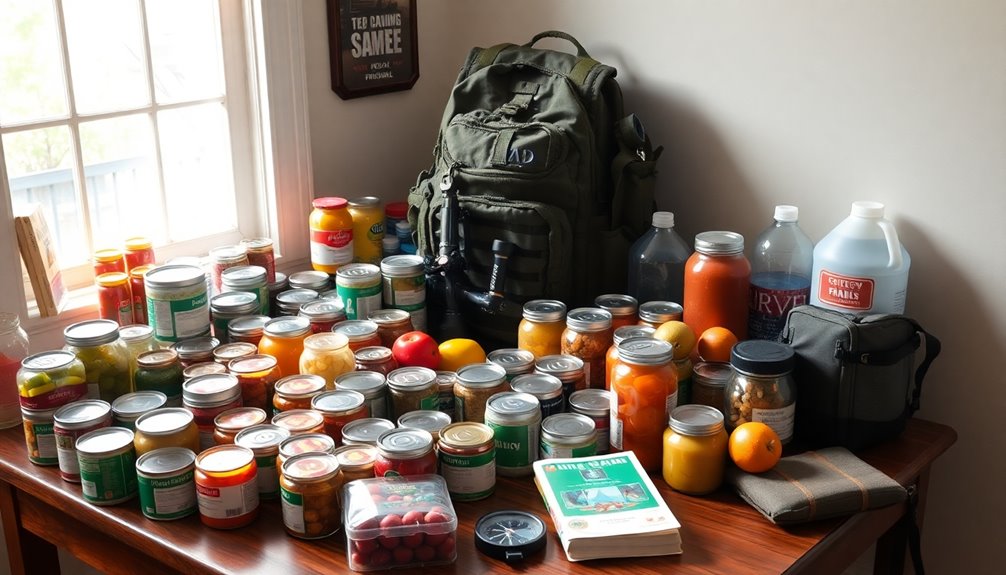
When it comes to preparedness, honing your skills and acquiring the right training resources can be just as crucial as having supplies.
You'll want to master survival skills like making a fire without a lighter or finding and purifying water from streams. Imagine impressing your friends when you start a fire using flint and steel! Additionally, learning various food preservation techniques can enhance your ability to store food for long-term survival. Developing mindfulness practices can also help you stay focused during stressful situations, particularly by improving your emotional regulation in high-pressure scenarios. Understanding how to use primitive weapons can also be a valuable skill for self-reliance in survival scenarios, especially in light of the potential for financial instability during crises. Moreover, being aware of cognitive decline can help you understand and support others who may struggle in stressful situations.
Physical and mental preparation is just as important. Regular jogging or strength training with weights can help you build endurance and resilience. Plus, practicing meditation can keep your mind calm when things get tough.
Don't forget practical skills! Learning basic self-defense and marksmanship can be super useful. Knowing first aid can save a life, and understanding simple carpentry or car maintenance can keep you one step ahead.
Communication is key, too. Get familiar with ham radios for emergencies and develop your situational awareness to spot dangers early. And hey, practicing your people skills can turn you into a social superstar!
Frequently Asked Questions
How Do I Choose the Right Bug Out Location?
Choosing the right bug-out location can be exciting!
First, look for a spot that's safe, away from big cities but close enough to reach in an emergency.
Check if there's a clean water source nearby, like a stream.
Make sure the area is private and hard for intruders to find.
Finally, think about the land's soil for growing food and space for any livestock you might want.
Happy planning!
What Are the Best Ways to Purify Water?
When it comes to purifying water, you've got some fun options! You can boil it to zap away germs—just get it bubbling!
If you've got a filter, that's awesome too; it'll catch dirt and other yucky stuff.
For a science twist, try distillation, where you boil water and collect the clean steam.
You can also use chemicals or UV light to make it safe.
How Long Do Emergency Food Supplies Last?
Emergency food supplies can last quite a while if you store them right!
For example, canned fruits and veggies last up to a year, while powdered milk keeps for about six months.
Some dehydrated foods, like grains and beans, can last up to 30 years in perfect conditions!
Just remember, keep them in a cool, dark place to keep them fresh and tasty.
With proper care, you'll be ready for anything!
What Skills Should I Learn for Survival Situations?
To be ready for survival situations, you should learn a few cool skills!
First, practice building shelters, like a lean-to or a teepee, using sticks and leaves.
Then, master making fire with matches or even a bow-drill.
Next, find clean water by boiling or purifying it.
Don't forget about food! Learn to catch fish and identify edible plants.
Finally, brush up on basic first aid, like CPR or treating burns.
You'll be a survival pro!
How Can I Keep My Supplies Organized and Accessible?
Keeping your supplies organized and accessible is super important!
Start by sorting everything into categories, like food, water, and tools. Use colorful labels so you can find what you need quickly.
Store frequently used items at eye level and keep bigger stuff on lower shelves.
Don't forget to check your supplies regularly, rotating them to keep things fresh.
Lastly, tidy up your storage area to keep it pest-free and easy to navigate.
You got this!
Conclusion
So, there you have it! By gathering these prepper supplies, you're setting yourself up for success, no matter what surprises life throws your way. Remember, it's not just about having stuff; it's about being ready and feeling safe. You'll have tasty food, cozy shelter, and the tools to keep your family protected. So, get started on your prepper journey today—it's like a fun adventure! Who knows? You might even discover cool new skills along the way!


